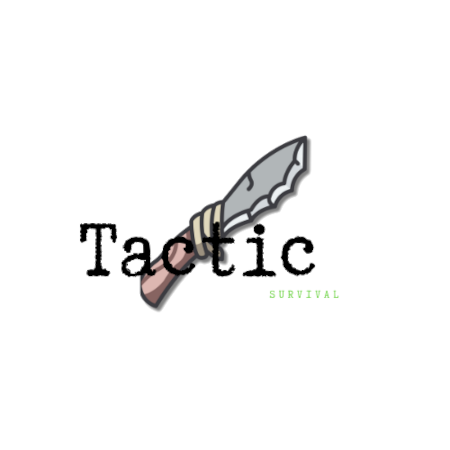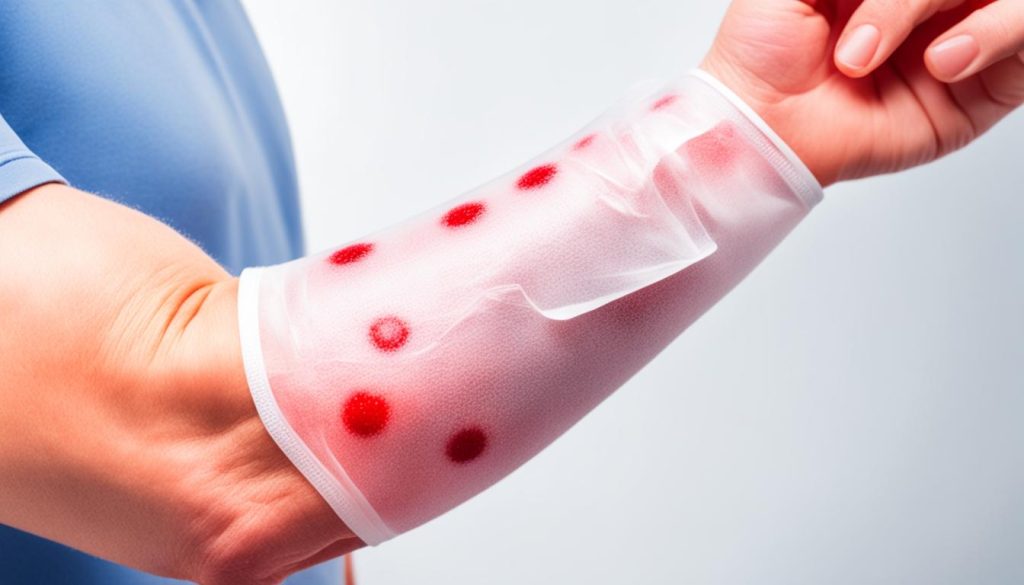Did you know that minor injuries happen every day? From cuts and scrapes to nosebleeds and insect stings, these are daily occurrences. It’s key to know how to manage them promptly for the best outcome and to ward off problems.
Essential for treating injuries is a well-stocked first aid kit. Include adhesive tape, various-sized bandages, pain relievers, and antibiotic ointment. Cleaning and bandaging cuts and scrapes rightly prevents infection and speeds up healing. Know when to get medical help with serious injuries.
To avoid scars, it’s best to keep wounds clean, moist, and covered. This speeds up healing and lessens scarring. It’s also crucial to recognize allergic reactions to insect bites and offer the proper first aid.
Key Takeaways:
- Knowing how to handle common injuries is crucial for proper treatment and prevention of complications.
- A well-stocked first aid kit is essential for treating injuries at home and on the go.
- Properly cleaning and bandaging cuts and scrapes helps prevent infection and promote healing.
- Seek medical attention for more serious injuries.
- Keeping wounds clean, moist, and covered can help prevent scars.
- Be aware of the signs of an allergic reaction to insect bites.
Creating a First Aid Kit
A well-stocked first aid kit is a must-have for treating injuries at home or away. Use a strong, clear plastic box to keep everything organized and easy to find. Important items to have are adhesive tape, bandages in various sizes, antibiotic ointment, alcohol wipes, pain relievers, and hand sanitizer.
Keep your first aid kit ready for anything with these essential supplies:
- Adhesive tape
- Bandages in different sizes
- Antibiotic ointment
- Alcohol wipes
- Pain relievers (such as ibuprofen or acetaminophen)
- Hand sanitizer
It’s critical your first aid kit is fully stocked and easy to get to but not where kids can reach it. Always check and replace any used or old items to keep your kit working well.
Every item in a well-prepared first aid kit has a role. With the right supplies, you can tackle injuries and give help promptly when it counts.
First Aid Kit Checklist
| Item | Quantity |
|---|---|
| Adhesive tape | 2 rolls |
| Bandages (assorted sizes) | 1 box |
| Antibiotic ointment | 1 tube |
| Alcohol wipes | 10 wipes |
| Pain relievers | 1 bottle |
| Hand sanitizer | 1 bottle |
Treating Minor Cuts and Scrapes
It’s important to treat minor cuts and scrapes right away. This prevents infection and scarring. Here’s how to help them heal faster and avoid problems:
1. Wash Hands
Always wash your hands with soap and water before touching the wound. This keeps bacteria away, reducing the risk of infection.
2. Apply Pressure
For cuts or scrapes that bleed, press down firmly with a cloth or gauze. Keep the pressure up for a bit. This should stop the bleeding.
3. Clean the Wound
Use cool water or a saline solution to clean the wound. Don’t use soap, hydrogen peroxide, or iodine. They can hurt and slow down healing. Cleaning removes dirt and germs that cause infections.
4. Remove Debris
If there’s anything like dirt or gravel in the wound, take it out gently with tweezers. Be extra careful to avoid more harm or infections.
5. Bandage when Necessary
Not all cuts and scrapes need a bandage. But if it’s in a place that gets dirty or rubbed a lot, use one. Change the bandage often to keep the wound from getting infected.
6. Seek Medical Attention
Deep, jagged, or easily infected wounds should be looked at by a doctor. They might need more care like stitches or antibiotics for better healing.
With these steps, treating minor cuts and scrapes at home is easy. Always keep things clean and get help for bad cuts.
First Aid for Nosebleeds, Splinters, and Insect Stings
Knowing what to do when someone has a nosebleed, splinter, or insect sting is key.
For a nosebleed, gently tip the head forward and pinch the nose for a few minutes. This will help stop the bleeding.
If someone has a splinter, start by cleaning the area. Then, use tweezers to pull it out gently.
With insect stings, it’s wise to first remove the stinger if it’s in there. Then, clean the sting area.
For relief, put ice on the sting and use calamine lotion or a paste of baking soda and water. This helps with pain and swelling.
If you notice signs of a bad reaction to an insect bite, get help fast.
Preventing Scars
Preventing scars from common injuries is crucial. You can avoid them by being careful and looking after wounds properly. Here is how to stop scars and help wounds heal well:
- Wearing protective gear: Prevent injuries and scars with the right gear. For example, wearing a helmet for biking or kneepads for skating.
- Proper wound care: After you get hurt, take good care of the wound. Clean it with soap and water gently, pat it dry, and put on a bit of antibiotic ointment or jelly. Keeping it moist helps it heal faster and reduces scarring risk.
- Avoid picking at scabs: It’s hard, but don’t pick at scabs. It can make scars worse. Let scabs fall off on their own after the wound heals completely.
- Silicone gel sheeting: Try silicone gel sheeting on healing wounds. It’s a simple way that can actually make scars look better. It works by flattening and softening scars.
If scars don’t go away, see a healthcare pro. They might suggest special creams or ointments. These can make scars less noticeable.
Additional Tips for Scar Reduction
Want to hide scars even more? Try these extra tips:
- Keep healing wounds out of sunlight to prevent dark scars.
- Massage scars gently in circles with your fingertips. This can make them look better by improving blood flow.
- Use silicone gel or other products to reduce scars, as per the instructions.
- If your scars really bother you, see a skin doctor or plastic surgeon. They might suggest laser or surgery to help.
| Prevention Methods | Benefits |
|---|---|
| Wearing protective gear | Reduces the risk of injuries and subsequent scarring |
| Proper wound care | Promotes faster healing and reduces the chance of scarring |
| Avoiding picking at scabs | Allows wounds to heal undisturbed and minimizes scarring |
| Silicone gel sheeting | Effective in flattening and softening scars over time |
Sports Injury Diagnosis and Treatment
Sports injuries need the right diagnosis and care for a full recovery. It’s key to see a doctor quickly to find out how bad the injury is and plan how to treat it.
Doctors and health providers are your first help for sports injuries. They ask about what happened and how it’s affected your daily life. This helps them understand the injury better.[source]
Physical exams and imaging tests are very important for figuring out sports injuries. Doctors look for things like strong pain, big swelling, and dark bruises. These could mean a severe injury that needs quick care.
Tests like x-rays or MRIs show the inside of your body. They help doctors see exactly what part is hurt and how bad it is. This information guides the best treatment for you.
Quote: “Imaging tests help us see sports injuries clearly. They guide our treatment plans.” – Dr. Emily Johnson, Orthopaedic Surgeon
The care for a sports injury depends on how bad it is. Major tears or breaks might need surgery or other medical steps. But, you can often treat minor injuries at home with R-I-C-E: Rest, Ice, Compression, and Elevation.[source]
Rest is important to let your body heal. You should avoid things that might make the injury worse.
Ice decreases pain and swelling. Apply ice packs for 15-20 minutes a few times a day.
Compression with a bandage can help reduce swelling and support the injury.
Elevation means keeping the injured area above your heart. This lessens swelling and helps drain fluid.
Besides R-I-C-E, you might take over-the-counter meds like ibuprofen. But, talk to a doctor first to make sure they’re safe for your injury.[source]
After the first treatment, you often need rehab to get back your strength and movement. Physical therapists create plans just for you. These plans help strengthen your body and prevent more injuries.
Table: Medical Professionals Involved in Sports Injury Treatment
| Healthcare Provider | Role |
|---|---|
| Emergency Physicians | Treat initial serious sports injuries |
| Primary Healthcare Providers | Handle non-serious injuries and provide ongoing care |
| Orthopaedic Surgeons | Specialize in diagnosing and treating injuries to bones, joints, ligaments, tendons, muscles, and nerves |
| Physical Therapists | Assist in developing rehabilitation programs, strengthening muscles and joints, and preventing further injury |
| Sports Medicine Specialists | Work specifically with athletes and individuals with musculoskeletal injuries |
Recovering from a sports injury takes time. Stay dedicated to your rehab plan and follow the advice of your medical team. This is essential for getting back to your sports and activities.
Medical Professionals for Sports Injury Treatment
Sports injuries often need medical experts for the right care. Depending on how bad the injury is, you might see an emergency doctor or a primary care provider. These doctors handle sports injuries well.
In serious situations, you might need specialists. Orthopaedic surgeons or pain doctors can help. They are skilled at diagnosing and treating tough sports injuries. They make plans that are right for each person to get better.
Physical therapists are also key in healing from sports injuries. They develop special rehab plans. These plans include exercises to make your muscles and joints strong again. This not only helps you heal but also prevents more injuries.
If your pain stays or gets worse after a sports injury, get help. Doctors like orthopaedic surgeons or physiotherapists are there to figure out what’s wrong. They then recommend the best ways to treat it.
Collaboration among Health Care Providers
Working together is important in treating sports injuries. Orthopaedic surgeons, primary doctors, and therapists team up. They make sure treatments cover every part of your injury.
Your first stop might be a primary care doctor. They can check your injury and if needed, refer you to specialists. This could be an orthopaedic surgeon or a therapist.
Orthopaedic surgeons are experts at fixing bones and muscles. If non-surgical methods don’t work, they step in. They might do surgeries like fixing fractures.
Therapists work with other doctors to make personal rehab plans. These plans help you get back to being strong and moving well. They are key to getting back to sports.
With everyone working together, you get the best care for your sports injury. This team approach is great for a full recovery and getting back to your game.
| Health Care Provider | Specialization |
|---|---|
| Emergency Physicians | Initial assessment and treatment of sports injuries |
| Primary Healthcare Providers | First-line care, referrals to specialists |
| Orthopaedic Surgeons | Surgical interventions, complex injury management |
| Physical Therapists | Rehabilitation programs, muscle and joint strengthening |
Conclusion
Knowing how to treat and manage common injuries is key for everyone. A first aid kit and knowing how to bandage wounds are vital. Don’t forget when to get medical help for big injuries.
Preventing injuries is just as important. Use helmets, pads, and gear. Gradually increase your activities to stay healthy and safe.
Seeking help from experts is a must for injury care. Doctors and therapists help you heal. Listen to them and follow their advice for a full recovery.
By managing and preventing injuries, life can be less impacted. Knowing how to care for yourself empowers you. It’s a big step for staying well.


